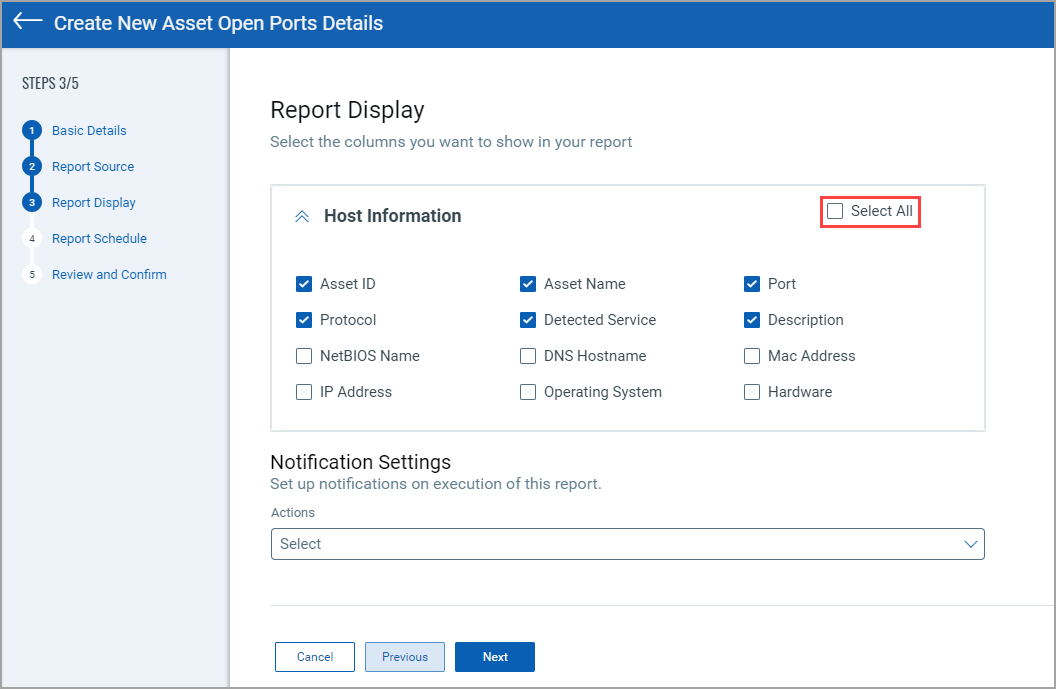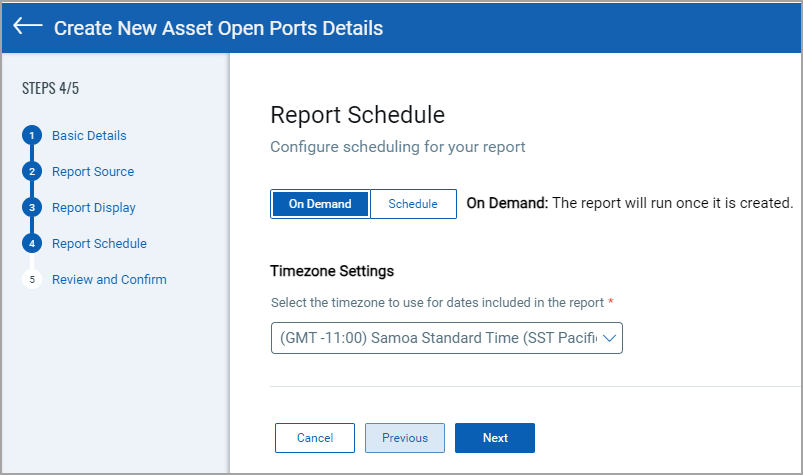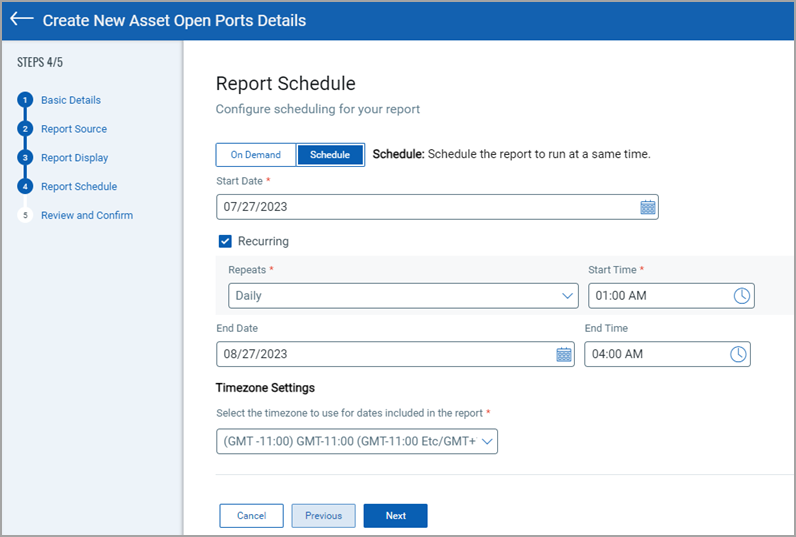Asset Open Ports Details Report
You can get the details, such as open ports, protocol, description, detected service, IP address, etc., for the selected assets from the Asset Open Ports Details report.
To create an Asset Open Ports Details report, go to Reports > Create Report > Asset Open Ports Details.
Step 1: Basic Details
Provide report title and report description for the asset details report. Click Next.
Step 2: Report Source
In the Report Source step, you can define the scope of the assets to be included in the report using the following approaches.
- Include Assets: Click ![]() to add the assets with the asset name. You can search and select an asset with an asset name.
to add the assets with the asset name. You can search and select an asset with an asset name.
- Include hosts for tags: Click ![]() to add the assets with tags. You can search and select an asset with tags.
to add the assets with tags. You can search and select an asset with tags.
- Source Type: Using this option, Choose the type of assets: All, Managed, or Unmanaged to define the type of assets you want to include in your report.
- Search Query: You can select the assets using a search query.
Once you select the report source, click Next.
Step 3: Report Display
(1) Select host attributes to be included in the report. The selected attributes are shown as column headers in the report.

(2) (Optional) Choose to set up an email notification. Select Send Email (via Qualys) from the Actions list and complete the following steps:
i) Enter the email addresses in the Recipients field. You can enter up to 50 email addresses separated by a comma.
ii) Enter the email subject line in the Subject Line field.
iii) Enter the message text in the Message field.
iv) Select the Restrict downloads checkbox. Enter the number in the Enter Limit field to limit the number of times the report can be downloaded from the report link that will be sent through the email notification.
Note:
- The email notification is sent after the report is generated for reports with ‘Completed’, ‘Failed’, or ‘Incomplete’ statuses.
- When you download the report, it is downloaded as a CSV file. A text file is downloaded when you try to download the report after the limit that you set is reached. When you open the text file, it mentions that the ‘Maximum download limit reached. Contact Support’.
(3) Click Next.
Step 4: Report Schedule
Define the report schedule and click Next.
On Demand: The report gets generated once it is created. Select the timezone for dates in the report to be generated.

Schedule: The report gets generated as per the defined schedule. You can create a recurring schedule for report execution. Select the timezone for dates in the report to be generated.

You can manage schedules (view info, delete, and pause/resume schedule) from the Reports > Schedule tab.
Step 5: Review and Confirm
Review your selections and click Finish. You can edit basic details, report source, and report display from this step if required.